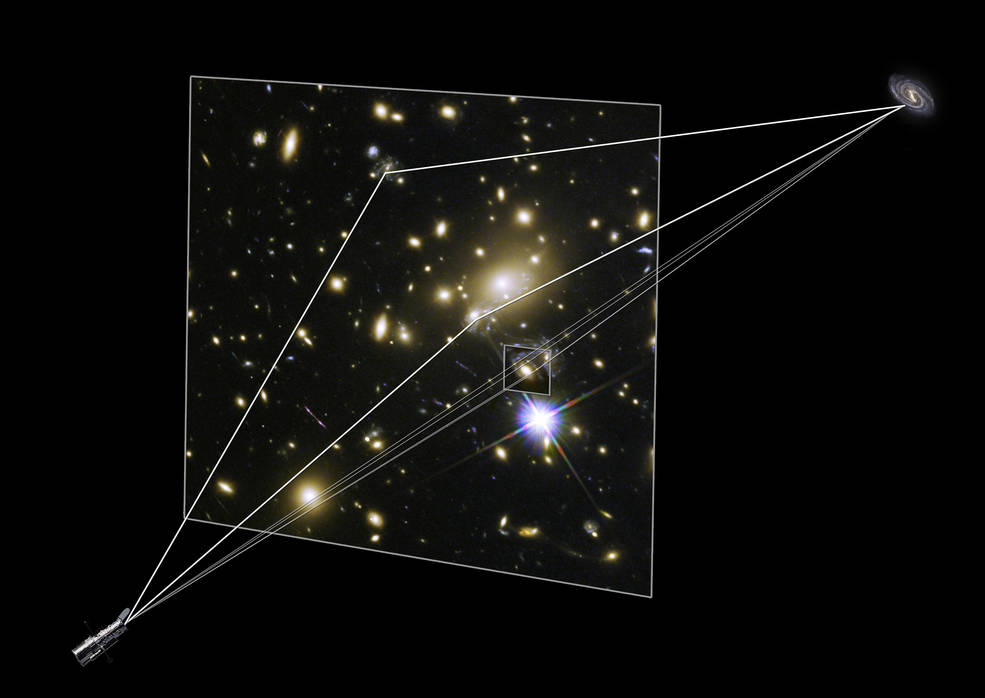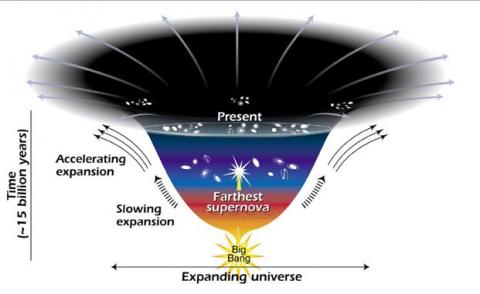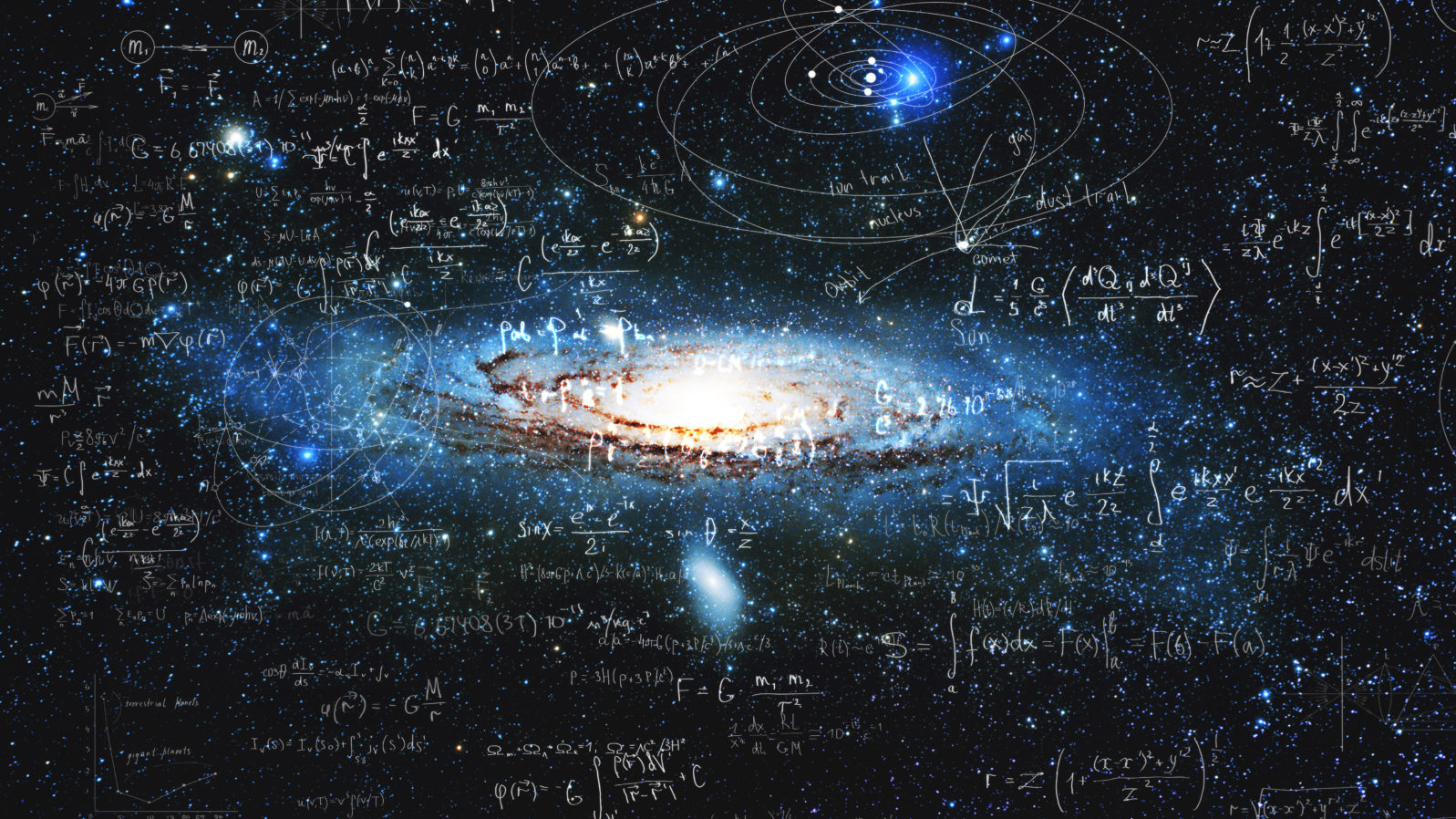What If ET Has Morphed Into What We Now Call the Laws of Nature?
Astrophysicist Caleb Scarf has asked us to consider a daring hypothesis for conundrums around dark matter and dark energyColumbia astrophysicist Caleb A. Scharf, has proposed that, if advanced technology might look like magic to less technologically advanced viewers, very advanced technology might look like the laws of nature:

Toward the end of Carl Sagan’s 1985 science-fiction novel Contact, the protagonist follows the suggestion of an extraterrestrial to study transcendental numbers. After computing to 1020th places, she finds a clearly artificial message embedded in the digits of this fundamental number. In other words, part of the fabric of the universe is a product of intelligence or is perhaps even life itself.
It’s a great mind-bending twist for a book. Perhaps hyper-advanced life isn’t just external. Perhaps it’s already all around. It is embedded in what we perceive to be physics itself, from the root behavior of particles and fields to the phenomena of complexity and emergence.
In other words, life might not just be in the equations. It might be the equations.
Caleb Scharf, “Is Physical Law an Alien Intelligence?” at Nautilus (November 17, 2016)
This is a somewhat different riff from the idea that we are a simulation that advanced extraterrestrials have created. That hypothesis assumes that they manipulate natural laws; this one assumes they are the laws, more or less.
Scharf offers a couple of reasons for considering his hypothesis, including the fact that only 5% of the universe is the “normal matter” with which we are familiar:
➤ A sufficiently advanced civilization could transcribe itself into new forms, not dependent on molecules. Perhaps it could inhabit the dark matter (thought to be 27% of the universe): “If you’re a civilization that has learned how to encode living systems in different substrates, all you need to do is build a normal-matter-to-dark-matter data-transfer system: a dark-matter 3D printer. Perhaps the mismatch of astronomical models and observations is evidence not just of self-interacting dark matter, but of dark matter that is being artificially manipulated.”

➤ The universe’s apparent speedup in expansion 5 billion years ago is currently attributed to dark energy (thought to be 68% of the universe). The time period covers the growth of life on Earth.
Scharf suggests, “any very early life in the universe would have already experienced 8 billion years of evolutionary time by the time expansion began to accelerate. It’s a stretch, but maybe there’s something about life itself that affects the cosmos, or maybe those well-evolved denizens decided to tinker with the expansion.”
If they did, their efforts at tinkering with (or becoming) the laws of nature would account for puzzles and discrepant behavior. “We can take a tumble down a different rabbit hole by considering that we don’t recognize advanced life because it forms an integral and unsuspicious part of what we’ve considered to be the natural world.”
Scharf acknowledges that these ideas “might seem wholly untestable” precisely because sufficiently advanced life “will blend completely into the fabric of what we’ve thought of as nature.”
His thought experiment amounts to an intelligent design hypothesis for the universe in which the creators and the laws of nature turn out to be the same thing. It is much bolder than the usual arguments around fine-tuning of our universe.

Scharf’s hypothesis highlights the genuine difficulty of accounting for a universe that comes into existence without any underlying intelligence at all.
Intelligence, seen as an expression of information, is like the third leg of the stool: matter, energy, and information. If we try to do without it, we end up smuggling it in somehow.
You may also enjoy these accounts of why we do not see extraterrestrials:
1.What if extraterrestrials can’t afford to take chances with us?
That’s the Dark Forest Hypothesis, riffing off the title of one of famed Chinese sci-fi author Liu Cixin’s novels. The Dark Forest Hypothesis assumes that we can use sociology to figure out what extraterrestrial intelligences might be like or might want. But can we?
2.Are the Aliens We Never Find Obeying Star Trek’s Prime Directive? The Directive is, don’t interfere in the evolution of alien societies, even if you have good intentions. Hence the Zoo hypothesis. Assuming the aliens exist, perhaps it’s just as well, on the whole, if they do want to leave us alone. They could want to “fix” us instead…
3.How can we be sure we are not just an ET’s simulation? A number of books and films are based on the Planetarium hypothesis. Should we believe it? We make a faith-based decision that logic and evidence together are reasonable guides to what is true. Logical possibility alone does not make an idea true.
4.Did the smart machines destroy the aliens who invented them? That’s the Berserker hypothesis. A smart deadly weapon could well decide to do without its inventor and, lacking moral guidance, destroy everything in sight. Extinction of a highly advanced civilization by its own lethal technology may be more likely than extinction by natural disaster. They could control nature.
5.Researchers: The aliens exist but they are sleeping… And we wake them at our peril. The Aestivation hypothesis is that immensely powerful aliens are waiting in a digitized form for the universe to cool down from the heat their computers emit.
6.Maybe there are just very few aliens out there… The Rare Earth hypothesis offers science-based reasons that life in the universe is rare. Even if life is rare in the universe, Earth may be uniquely suited to space exploration, as the Privileged Planet hypothesis suggests.
7.Does science fiction hint that we are actually doomed? That’s the implication of an influential theory, the Great Filter hypothesis, as to why we never see extraterrestrials. Depending how we read the Kardashev scale, civilizations disappear somewhere between where we are now and the advanced state needed for intergalactic travel.
8.Space aliens could in fact be watching us. Using the methods we use to spot exoplanets. But if they are technologically advanced, wouldn’t they be here by now? The Hart-Tipler conjecture (they don’t exist) is, of course, very unpopular in sci-fi. But let’s confront it, if only to move on to more promising speculations.
9.Is the brief window for finding ET closing? According to some scenarios (the Brief Window hypothesis), we could be past our best-before date for contacting aliens. Of course, here we are assuming a law of nature as to how long civilizations last. Can someone state that law? How is it derived?
10.What if we don’t see aliens because they have not evolved yet? On this view, not only did we emerge during a favorable time in the universe’s history but we could end up suppressing them. The Firstborn hypothesis (we achieved intelligence before extraterrestrials) lines up with the view that humans are unique but sees that status as temporary.
11.The aliens exist—but evolved into virtual reality at a nanoscale. That’s the Transcension Hypothesis, the latest in our series on science fiction hypotheses as to why we don’t see extraterrestrials.
On this view, after a Singularity the ETs become virtual intelligences, exploring inner space at an undetectably small scale.
12.Is intelligent life in the universe living in interior oceans of planets and moons? The Ocean Planets Hypothesis is that intelligent beings may flourish in the interior oceans of the moons of gas giant planets — or within exoplanets — but they are trapped there. If intelligent life forms are trapped in the interior oceans of rocky moons and planets, Earth is a special planet—much better suited to space exploration.
13.Is real-world space travel just too daunting for ET? That’s the Percolation Hypothesis as to why we don’t make contact with aliens. They can’t overcome the laws of physics, any more than we can. If there is a purpose behind the universe, maybe the aliens and we weren’t intended to meet. That’s worth considering, given the physics barriers.
14.The Aurora Hypothesis: ET could risk only rare contact with us. Given the difficulties and risks of space travel, extraterrestrials with advanced technology may have visited Earth only one in a million years, researchers say. After centuries of modern science, we are just now looking for fossil bacteria on Mars, not without risk. ET may be in the same position.
15.Data analyst offers 15 reasons extraterrestrials aren’t seen. He estimates that there should be 100,000 civilizations in our galaxy. Some of Yung Lin Ma’s suggested reasons are ones we had not considered before, including flow of time and communication differences.
